PALEO ART
Essential Tool for Communicating Paleontological Discoveries
Article by Alpha Del Bosque
Max Bellomio 2021
@digital_duck
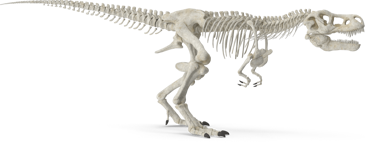
CHAPTER 1
Introduction to Paleo Art
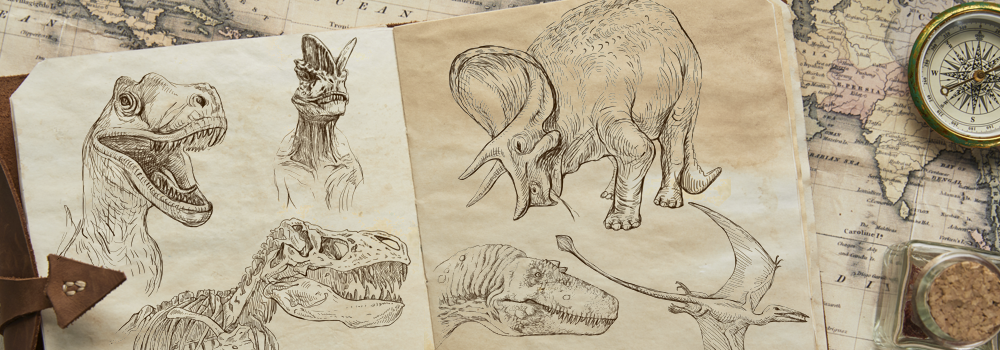
What is Paleo Art?
Paleo art, short for paleontological art, also sometimes called paleo illustration, is a fascinating field that merges the worlds of science and art to bring prehistoric life to the modern eye.
It's the practice of reconstructing and illustrating extinct organisms and their environments based on fossil evidence and scientific research. This can include anything from the mighty dinosaurs to early mammals, ancient plants, and even microorganisms.
Paleo art is not just about drawing or painting dinosaurs, though that's certainly a big part of it. It encompasses a wide range of artistic expressions, including sculpture, digital modeling, and even virtual reality experiences.
The scope of paleo art is vast, covering millions of years of Earth's history and a staggering diversity of life forms. By visualizing these ancient worlds, paleo artists help us understand and appreciate the life that once roamed our planet.
Importance in Scientific Communication
Paleo art plays a crucial role in scientific communication. It's one thing to read about a dinosaur species in a scientific paper, but it's another to see a vivid, lifelike depiction of that dinosaur in its natural habitat.
These illustrations can make complex scientific concepts accessible and engaging to the general public.
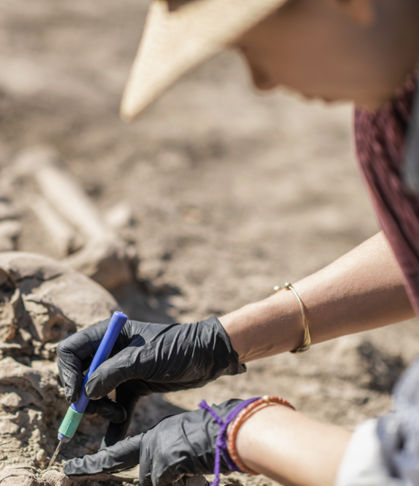
For scientists, paleo art serves as a valuable tool to hypothesize and visualize their research findings. Accurate reconstructions can help paleontologists spot details they might have missed and communicate their discoveries more effectively.
In educational settings, paleo art is indispensable. It sparks curiosity and imagination in students, making the learning process more interactive and enjoyable.
Furthermore, paleo art helps bridge the gap between the scientific community and the public. It brings prehistoric life into museums, books, movies, and even classrooms, making it possible for everyone to marvel at the wonders of ancient life.
The History of Paleo Art
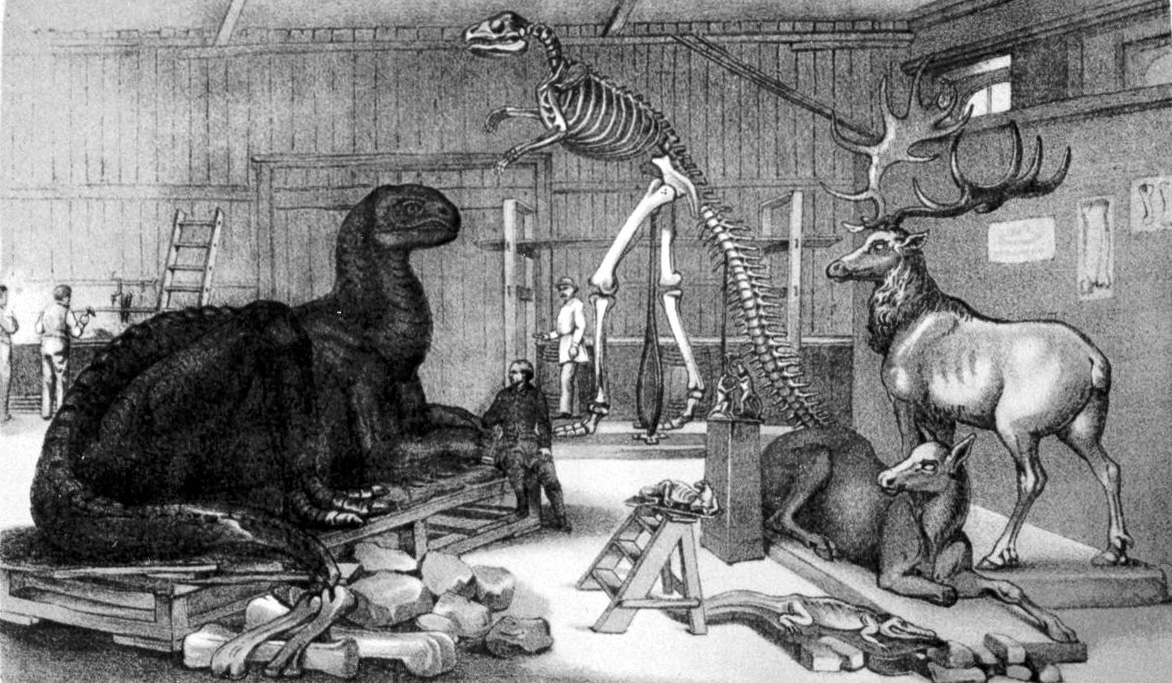
A view of Benjamin Waterhouse Hawkins's Central Park studio / Wikimedia Commons // Public Domain
The history of paleo art dates back to the early 19th century, a time when the world was just beginning to grasp the concept of dinosaurs. One of the pioneers in this field was the British artist and scientist Sir Richard Owen, who coined the term "Dinosauria" in 1842.
Around the same time, artists like Benjamin Waterhouse Hawkins began creating some of the first life-sized dinosaur sculptures for the Crystal Palace Park in London. These early depictions were based on limited fossil evidence and often reflected the Victorian era's understanding of reptiles, leading to somewhat inaccurate but imaginative representations.
For example, Hawkins' sculptures depicted dinosaurs like Iguanodon and Megalosaurus as slow, lumbering lizards with sprawling postures, which we now know is far from their actual appearance. Despite these inaccuracies, these early works captured the public's imagination and laid the groundwork for future advancements in paleo art.
Evolution of Techniques and Styles
As the field of paleontology advanced, so did the techniques and styles of paleo art. By the late 19th and early 20th centuries, artists like Charles R. Knight began to revolutionize paleo art with more scientifically accurate depictions. Knight's collaborations with prominent paleontologists like Henry Fairfield Osborn at the American Museum of Natural History led to more lifelike and dynamic portrayals of prehistoric animals.
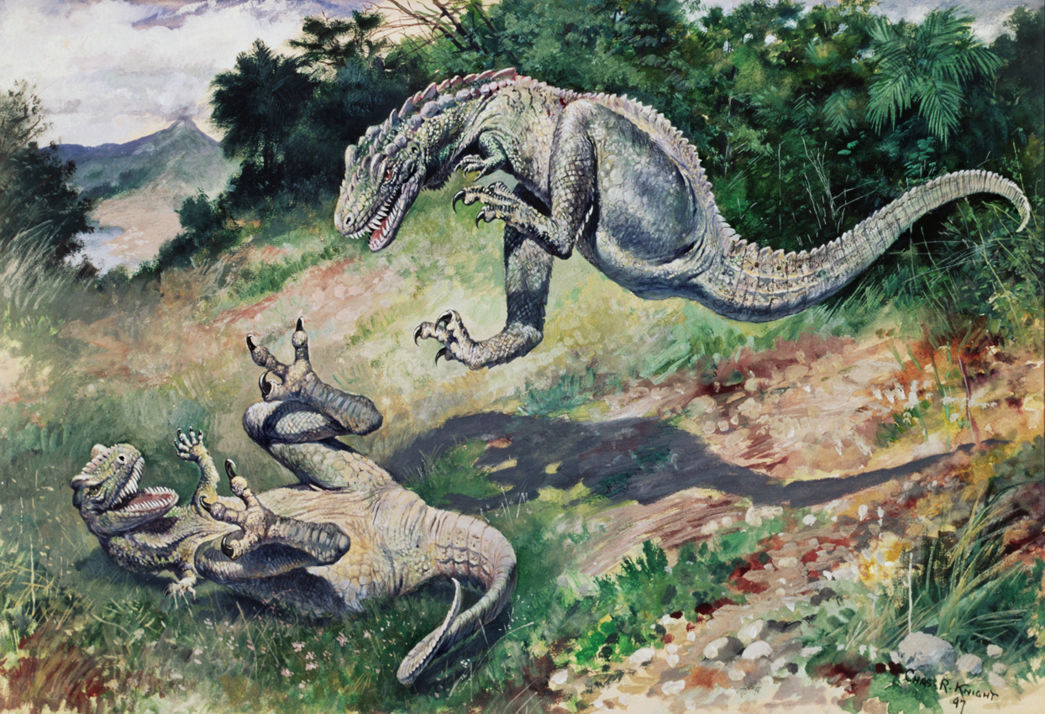
Charles R. Knight, Laelaps (now known as Dryptosaurus).
Knight's works, such as his iconic painting of the Laelaps (now known as Dryptosaurus) battling, showcased dinosaurs as active and agile creatures, a significant departure from the earlier lizard-like depictions. His attention to anatomical details and movement set new standards for paleo art.
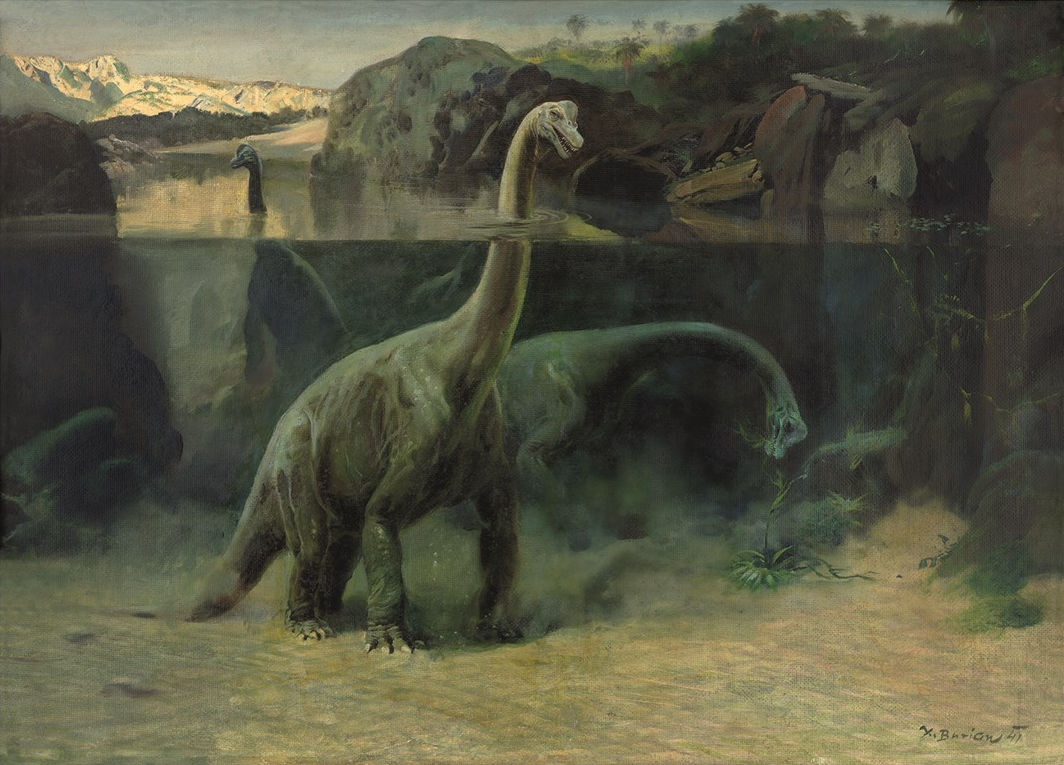
Brachiosaurus 1941, Zdeněk Burian. Borrowed from Albatros Media.
The latter half of the 20th century saw further advancements with artists like Zdeněk Burian, whose detailed and atmospheric paintings of prehistoric life were informed by close consultation with scientists. Burian's work brought a new level of realism and environmental context to paleo art.
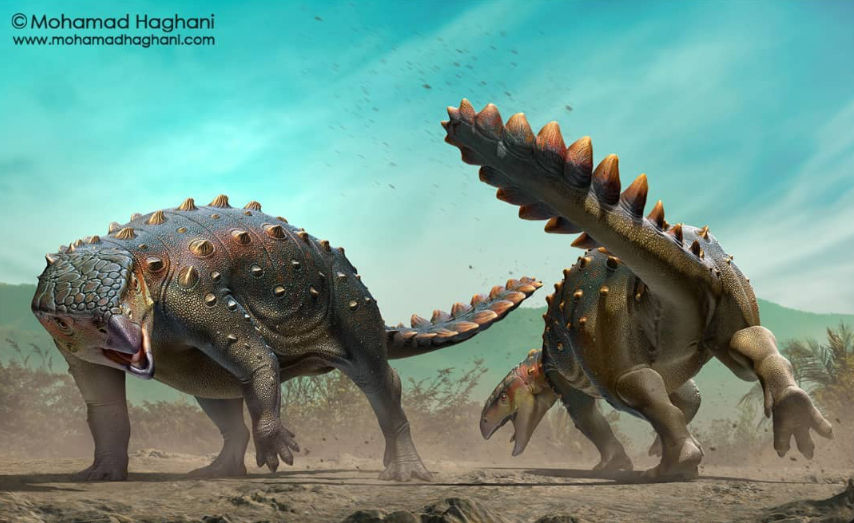
In recent decades, the advent of digital technology has revolutionized paleo art once again. Artists now use digital painting, 3D modeling, and virtual reality to create incredibly detailed and immersive representations of prehistoric life. This technology allows for more accurate reconstructions and the ability to easily revise depictions as new scientific discoveries are made.
In summary, the history of paleo art is a testament to the evolving understanding of prehistoric life and the continuous quest to bring these ancient worlds to life. From the early, imaginative depictions to today's highly accurate and immersive illustrations, paleo art has come a long way and continues to inspire and educate people of all ages.
CHAPTER 2
The Intersection of Art and Science
Bridging the Gap Between Science and Public Imagination
Paleo artists play a crucial role in translating the often complex and technical findings of paleontology into captivating and accessible visuals.
Their work bridges the gap between science and public imagination, transforming dry scientific data into vivid, engaging images that spark curiosity and wonder. When people see a beautifully rendered illustration of a dinosaur or an ancient ecosystem, they're not just looking at art; they're seeing a piece of history brought to life.
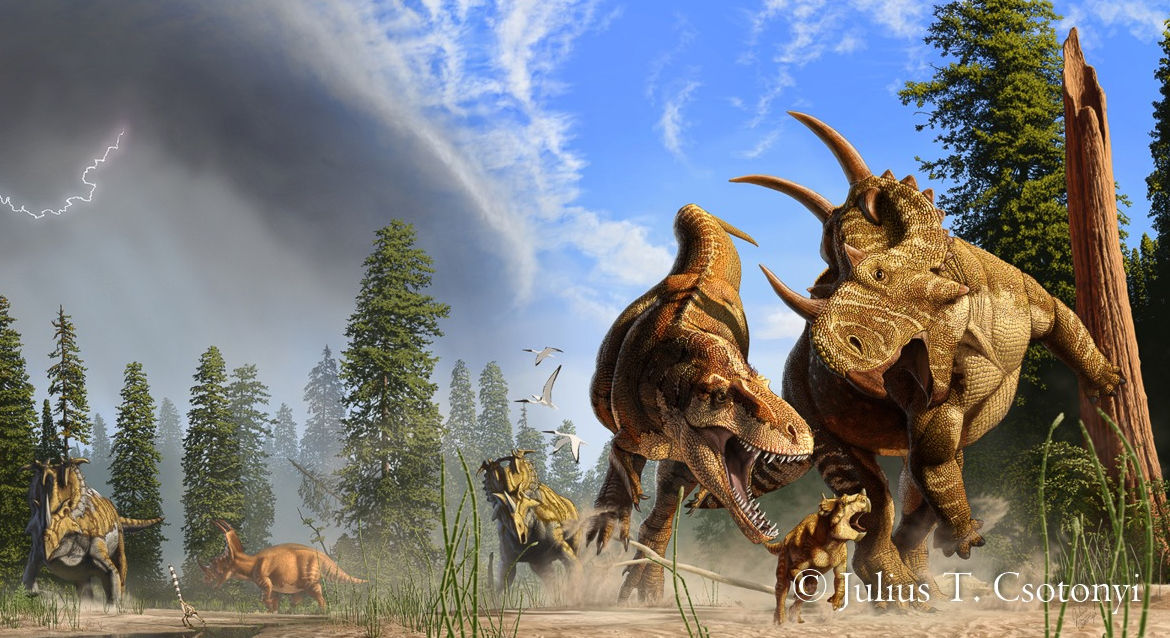
For instance, consider the famous depiction of the Tyrannosaurus rex in its natural habitat. Without the artistic touch, the T. rex might remain just a name in a textbook.
But through the skillful work of paleo artists, we can visualize this mighty predator as it roamed the Earth, its powerful legs propelling it forward, its sharp teeth bared in a fearsome snarl.
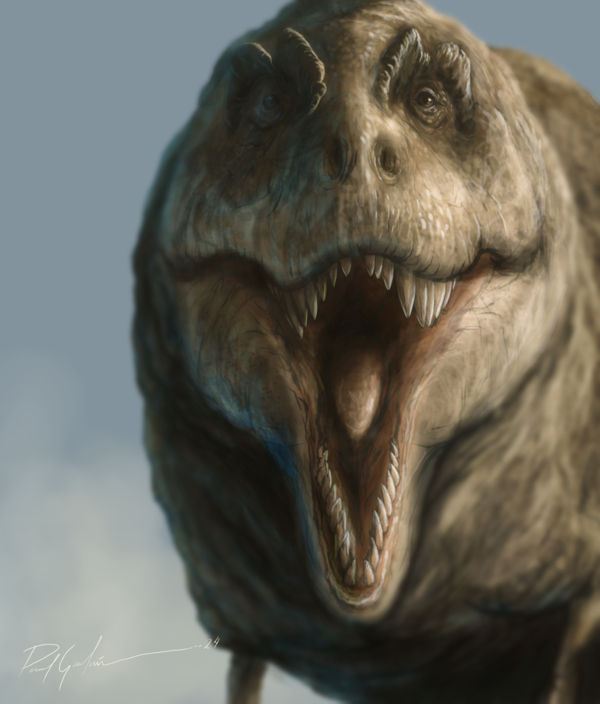
Artist Pavel Galvan
This ability to bring prehistoric creatures to life helps the public connect with and understand the distant past in a way that words alone cannot achieve.
Collaborations with Paleontologists
The accuracy and scientific value of paleo art heavily depend on close collaboration between artists and paleontologists. These partnerships ensure that the depictions are not only visually stunning but also scientifically accurate.
Paleontologists provide the raw data—fossil evidence, anatomical details, and insights into the behavior and environment of ancient organisms. Paleo artists then use this information to create illustrations that are as true to life as possible.
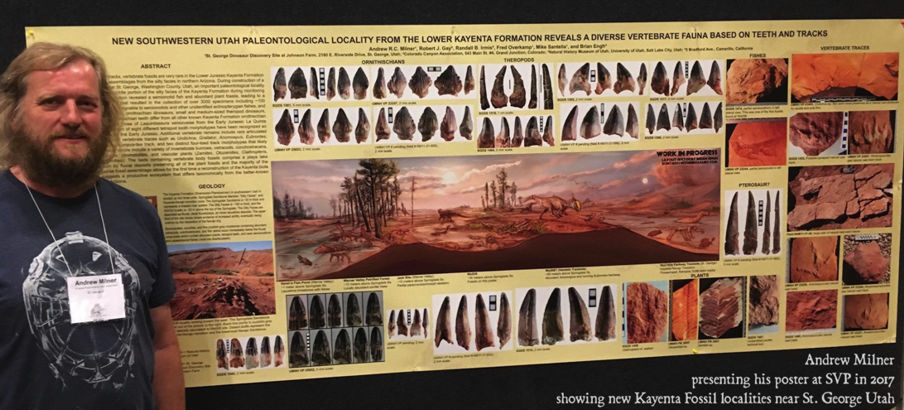
For example, when reconstructing a new dinosaur species, a paleo artist will work closely with paleontologists to understand the fossil evidence, including bone structure and any preserved soft tissues.
They might also discuss the latest research on related species and modern animals that share similar features. This collaborative process ensures that the final artwork is a precise and educational representation of the creature.
A notable example of such collaboration is the work between paleo artist John Gurche and the team at the Smithsonian Institution's National Museum of Natural History.
Gurche's reconstructions of early hominins are based on extensive consultations with paleoanthropologists, ensuring that each detail, from bone structure to facial features, is accurate and reflective of the latest scientific understanding.
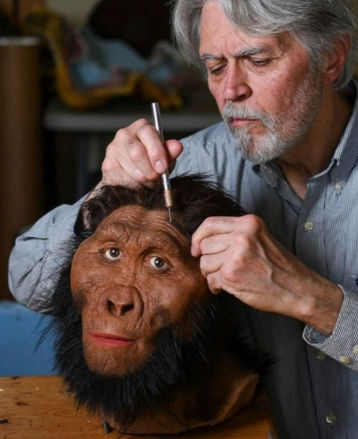
Scientific Foundations of Paleo Art
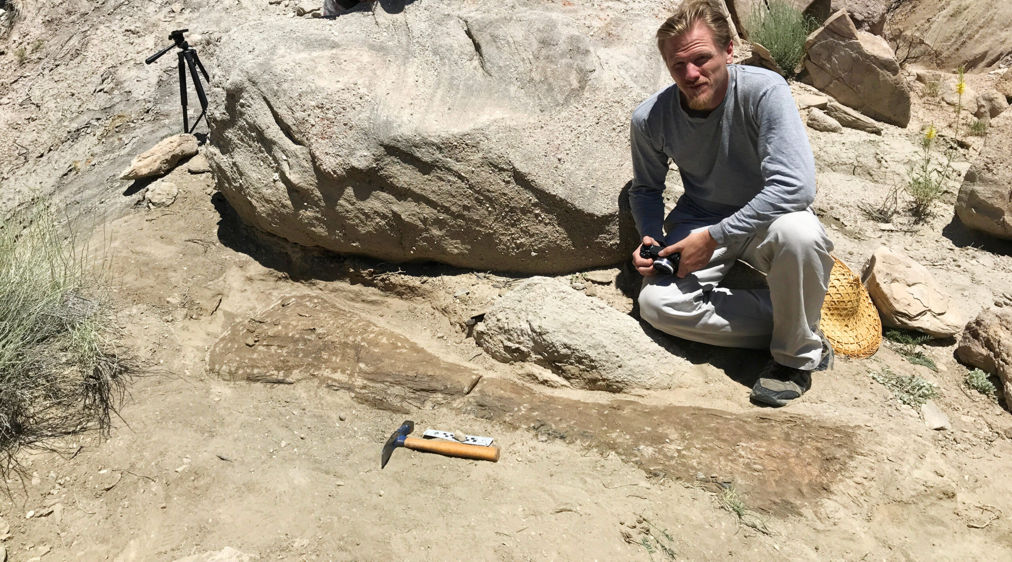
Paleo Artist Brian Engh. Brachiosaurus humerus found with Mathew Wedel & Thuat Tran. Photo by Mathew Wedel.
- Fossil Evidence
Fossils are the primary source of information for paleo artists. These remnants of ancient life provide critical clues about the anatomy, behavior, and environment of extinct species.
Fossils can include bones, teeth, footprints, skin impressions, and even traces of feathers or fur. Paleo artists study these fossils meticulously, often spending hours examining museum collections or consulting with paleontologists to understand the details they need to depict accurately.
For instance, the discovery of a nearly complete fossil skeleton of a dinosaur can reveal its overall body shape, limb proportions, and possible posture. Skin impressions or feather imprints provide information about the creature's outer appearance. Such fossil evidence is the foundation upon which paleo artists build their reconstructions, ensuring that their artwork is grounded in real, tangible data.
- Comparative Anatomy
Comparative anatomy involves studying the similarities and differences between the anatomies of different species, both living and extinct. This field is crucial for paleo artists because it helps them infer the appearance and behavior of extinct animals based on modern analogues.
For example, by comparing the skeletal structure of a Megantereon to that of a modern feline as Paleo Artist Mauricio Antón did, artists can make educated guesses about the dinosaur's musculature, skin texture, and movement. This method allows paleo artists to fill in the gaps where fossil evidence might be incomplete or ambiguous.
- Modern Analogues
Modern animals often serve as references for paleo artists when reconstructing extinct species.
These modern analogues provide a living example of how certain anatomical features might have looked and functioned in extinct animals.
Observing the behavior, movement, and habitats of contemporary species can offer valuable insights into the lives of their ancient counterparts.
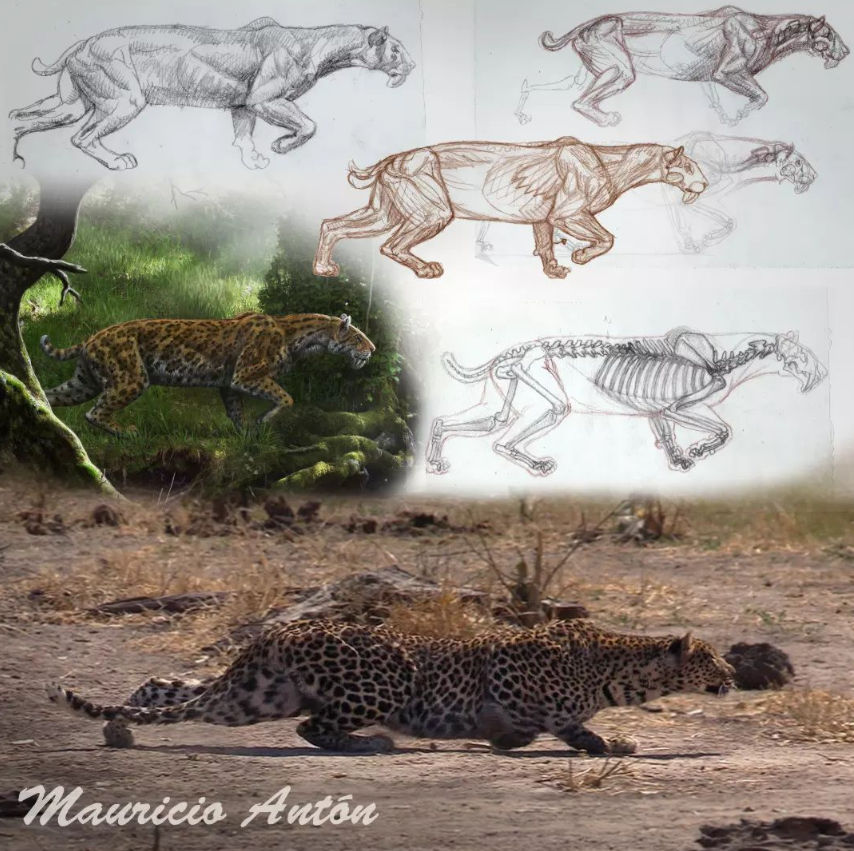
These analogues not only enhance the realism of paleo art but also help communicate the idea that extinct animals were once living, breathing creatures with complex behaviors and interactions.
By combining fossil evidence, comparative anatomy, and modern analogues, paleo artists create scientifically grounded and visually compelling illustrations. These artworks not only educate the public but also inspire a deeper appreciation for the rich tapestry of life that has existed on our planet.
CHAPTER 3
Techniques and Tools
Drawing and Painting
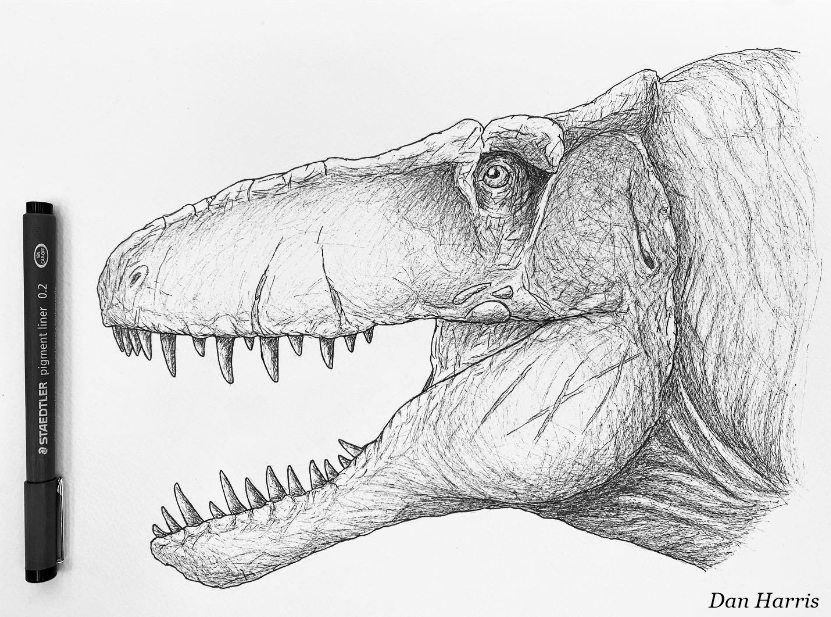
Traditional drawing and painting have long been the backbone of paleo art. Artists use pencils, inks, watercolors, and oils to create detailed illustrations of prehistoric life. These methods allow for a high degree of precision and control, enabling artists to meticulously depict the fine details of anatomy and environment.
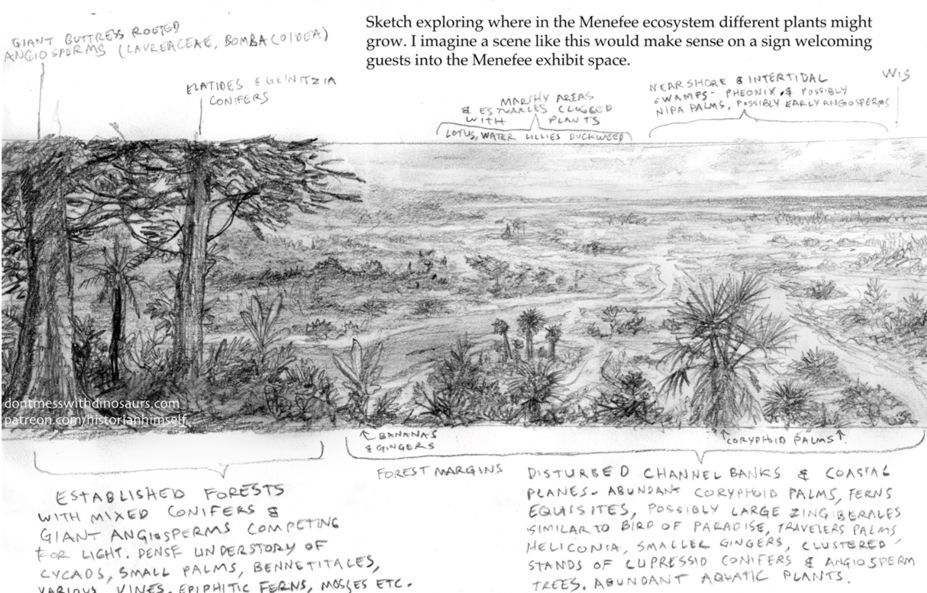
Brian Engh Sketches
Drawing often begins with preliminary sketches based on fossil evidence and scientific consultation. These sketches are refined through multiple iterations, gradually building up to a final piece.
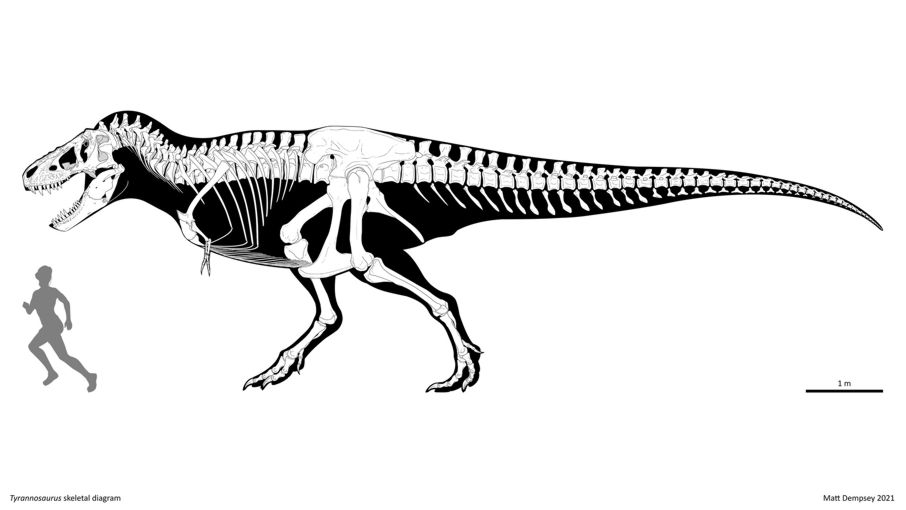
The artist pays close attention to aspects like bone structure, muscle placement, and skin texture, ensuring that the depiction is both scientifically accurate and visually compelling.
Painting adds another layer of depth and realism. Artists use various techniques to achieve the desired effects, from the delicate washes of watercolor to the bold, textured strokes of oil paints. The use of color is particularly important in paleo art, as it brings the creatures and their habitats to life.
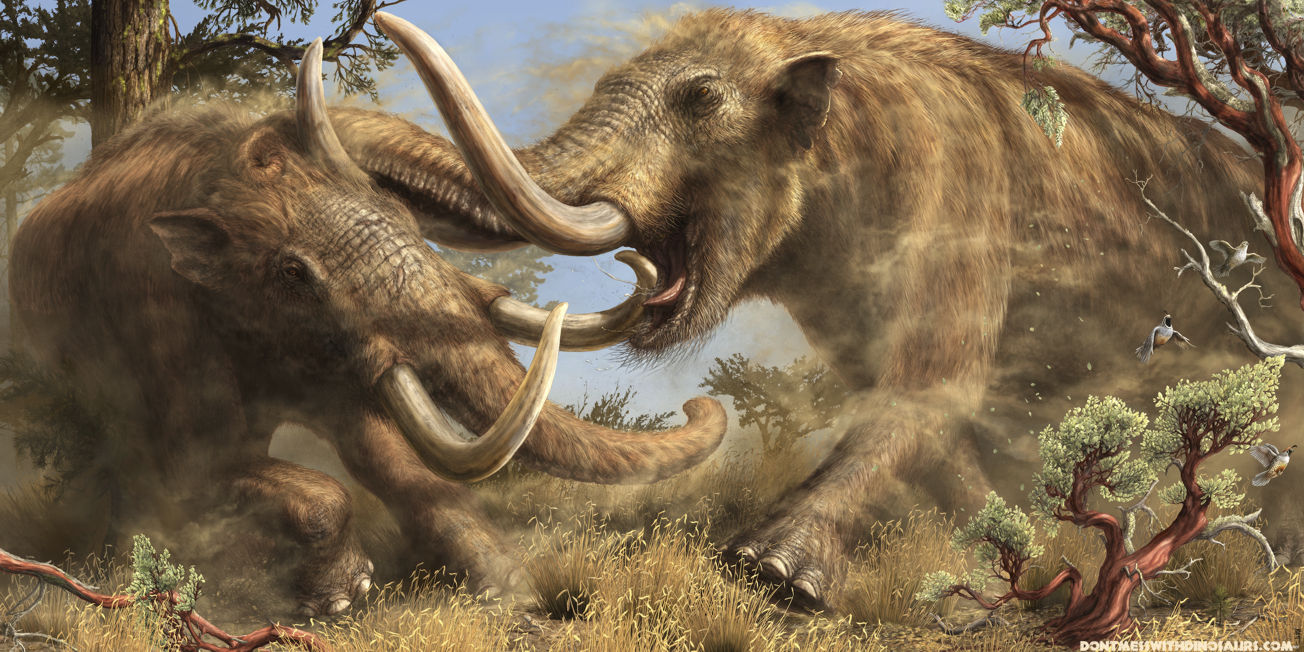
Valley of the Mastodons / Mural by Brian Engh at The Western Science Center in Hemet CA, USA.
While the exact colors of prehistoric animals are often speculative, artists make informed guesses based on modern analogues and any available fossil evidence, such as pigment cells found in exceptionally well-preserved specimens.
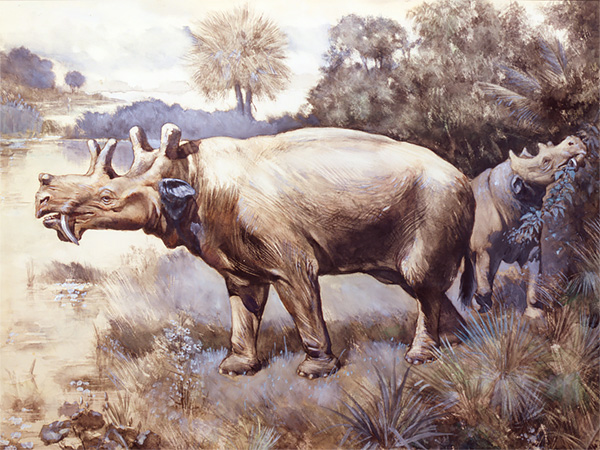
Uintatherium from Charles Knight.
For example, Charles R. Knight's paintings of dinosaurs and other prehistoric animals in the early 20th century set a high standard for accuracy and artistry. His work continues to inspire modern paleo artists, who build upon his techniques to create even more lifelike and detailed depictions.
Sculpting
Sculpting is another traditional method used in paleo art, offering a three-dimensional perspective that can be particularly impactful. Artists create models using clay, resin, and other materials, meticulously shaping and detailing each aspect of the organism's anatomy.
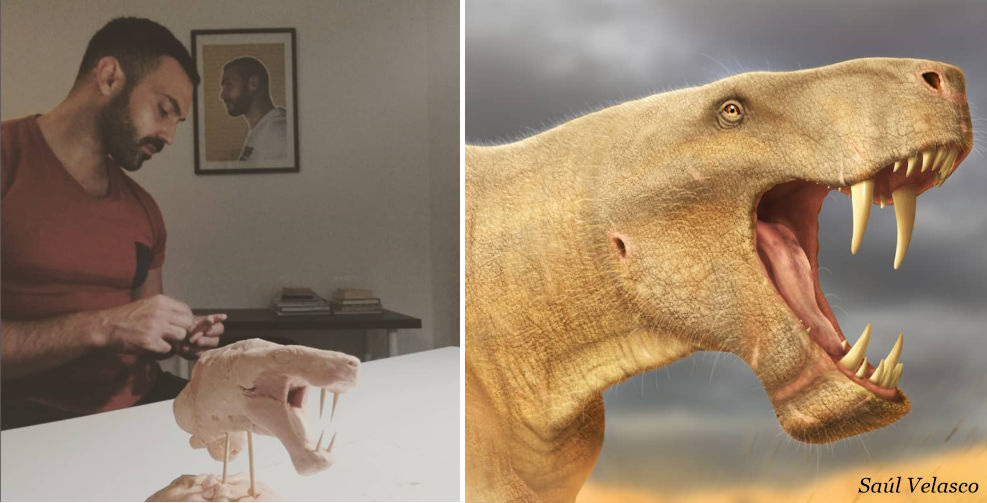
The sculpting process often begins with an armature, a basic framework that provides structure and support. Artists then layer materials over this armature, gradually building up the form and adding details. This method allows for a tactile and dynamic exploration of the subject, enabling artists to understand and represent the physicality of the creatures they are depicting.
Sculptures can vary in scale, from small, handheld models to life-sized reconstructions. These models are not only valuable for visualizing extinct animals but also serve as educational tools in museums and exhibitions.
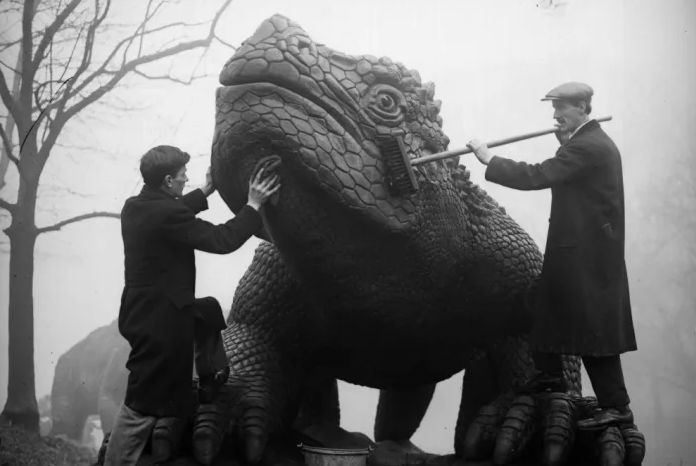
Benjamin Waterhouse Hawkins for the Crystal Palace Park.
For instance, the life-sized sculptures created by Benjamin Waterhouse Hawkins for the Crystal Palace Park in the 1850s were among the first to bring dinosaurs to the public in a tangible way, sparking widespread interest and fascination.
Digital Revolution in Paleo Art
The advent of digital technology has revolutionized paleo art, offering new tools and techniques that enhance accuracy and creativity. Digital painting and 3D modeling are at the forefront of this revolution, allowing artists to create highly detailed and realistic depictions with greater efficiency.
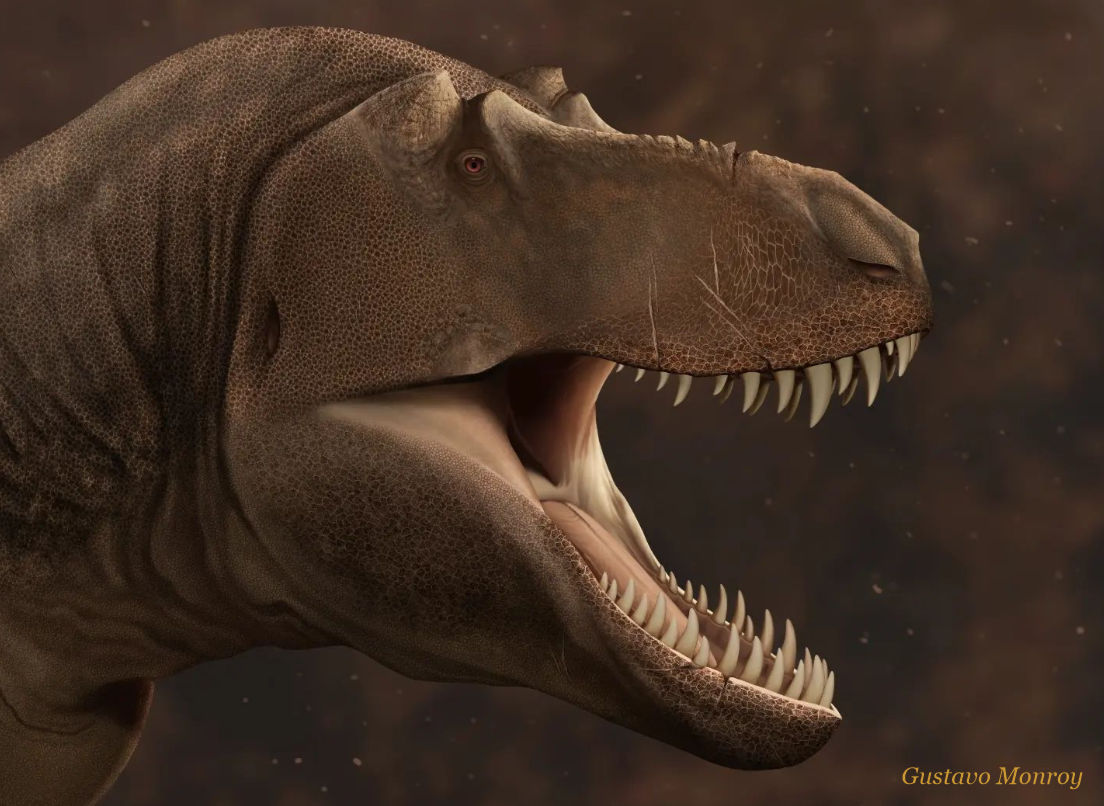
Digital painting involves using software like Adobe Photoshop or Corel Painter to create illustrations. These programs offer a range of brushes, textures, and effects that mimic traditional painting techniques while providing the flexibility to make adjustments easily.
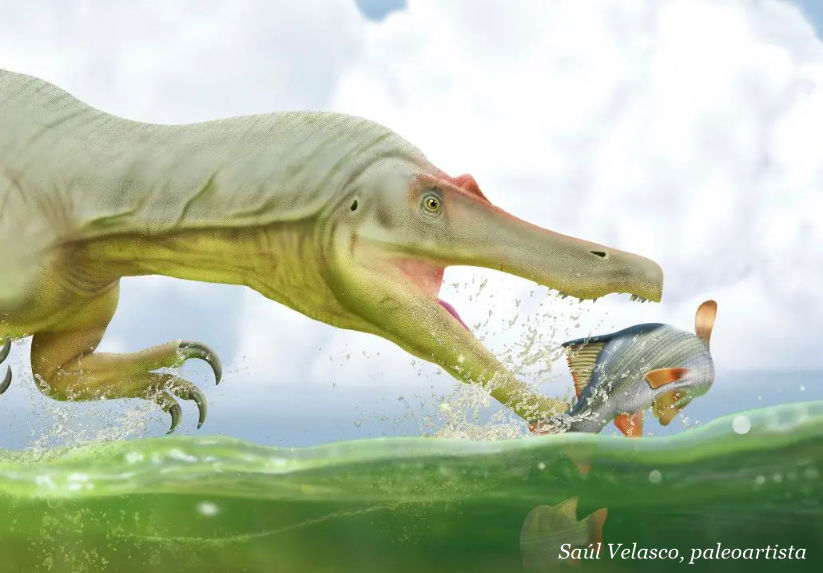
Artists can layer colors, experiment with lighting, and refine details without the constraints of physical media. Digital painting also facilitates collaboration, as artists can share and edit files in real-time with paleontologists and other experts.
- 3D modeling
3D modeling takes paleo art to another level by allowing artists to create fully realized three-dimensional representations of prehistoric life. Software like Blender, ZBrush, and Autodesk Maya enable artists to sculpt, texture, and animate digital models with incredible precision.

These models can be viewed from any angle, providing a comprehensive understanding of the creature's form and function.
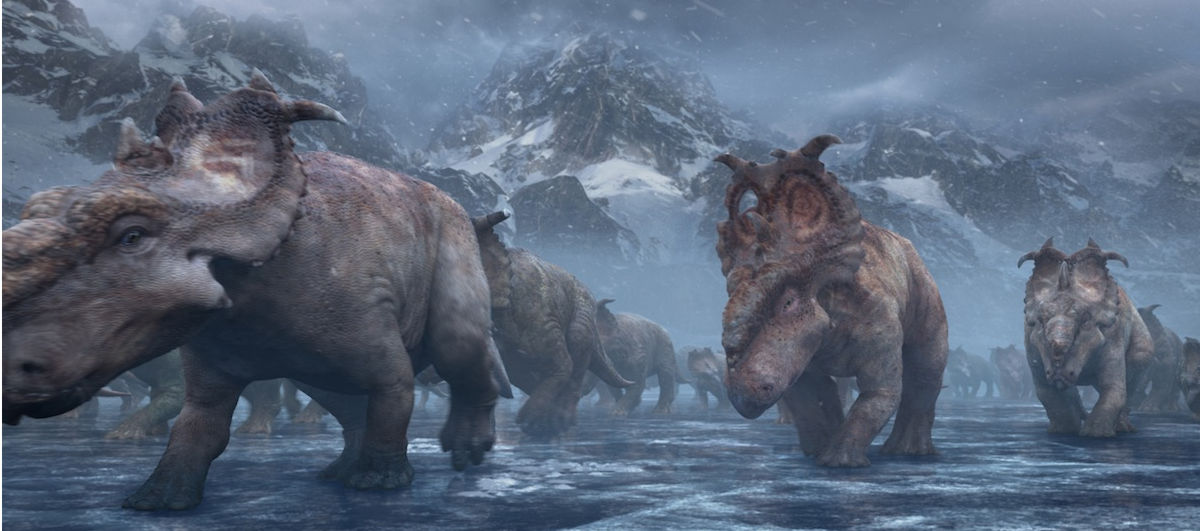
Scott Hartman - TV show Walking with Dinosaurs
One notable example of 3D modeling in paleo art is the work of artist and scientist Scott Hartman, who creates detailed skeletal reconstructions known as "skeletal diagrams." These digital models serve as a foundation for further artistic interpretation and are invaluable for both scientific research and public education.
LIKE THIS ARTICLE?
YOU'LL 🧡 THE NEWSLETTER!
Get timely tips to improve your services, land more projects, illustration tips, and more...

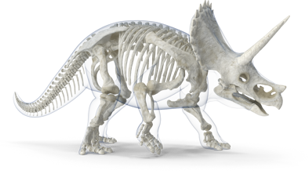
Virtual Reality and Augmented Reality
Virtual Reality (VR) and Augmented Reality (AR) represent the cutting edge of paleo art, offering immersive experiences that bring prehistoric worlds to life in unprecedented ways. VR and AR technologies allow users to interact with digital reconstructions in a fully immersive environment, providing a deeper and more engaging understanding of ancient life.

In VR, users wear headsets that transport them to a virtual prehistoric landscape. They can walk among dinosaurs, observe their behavior, and explore their environments as if they were actually there. This immersive experience is not only captivating but also educational, offering a unique way to learn about paleontology.

Bringing Rhomaleosaurus SEA DRAGONS back to LIFE with 360 VR | Google Arts & Culture
AR, on the other hand, overlays digital images onto the real world through devices like smartphones or AR glasses. This technology can bring prehistoric creatures into classrooms, museums, and even outdoor spaces, creating interactive and educational experiences.
For example, an AR app might allow users to point their device at a fossil in a museum exhibit and see a digital reconstruction of the entire animal, complete with animations showing how it might have moved and behaved.
The potential of VR and AR in paleo art is vast, opening up new possibilities for education, research, and public engagement. These technologies provide a dynamic and interactive way to explore prehistoric life, making the ancient past more accessible and exciting than ever before.
In summary, the techniques and tools used in paleo art have evolved dramatically, from traditional drawing and sculpting methods to cutting-edge digital technologies.
Each approach offers unique advantages, contributing to the rich and diverse field of paleo art. Whether through the meticulous strokes of a paintbrush or the immersive experience of virtual reality, paleo artists continue to bring the distant past to life, inspiring and educating audiences around the world.
CHAPTER 4
Elements of Paleo Illustration
Anatomy and Physiology
One of the core challenges in paleo art is accurately depicting the anatomy and physiology of dinosaurs. This process begins with a thorough understanding of the fossil evidence, which provides the skeletal framework for these ancient creatures.
Paleo artists study fossils meticulously, often collaborating with paleontologists to ensure every bone and joint is correctly placed. This skeletal framework forms the basis upon which muscles, skin, and other tissues are added.

Anatomy and physiology go hand-in-hand in paleo illustration. Artists must consider how muscles attach to bones and how these muscles would function in a living organism. Understanding biomechanics is crucial; it helps artists accurately depict the posture, gait, and potential movements of dinosaurs.
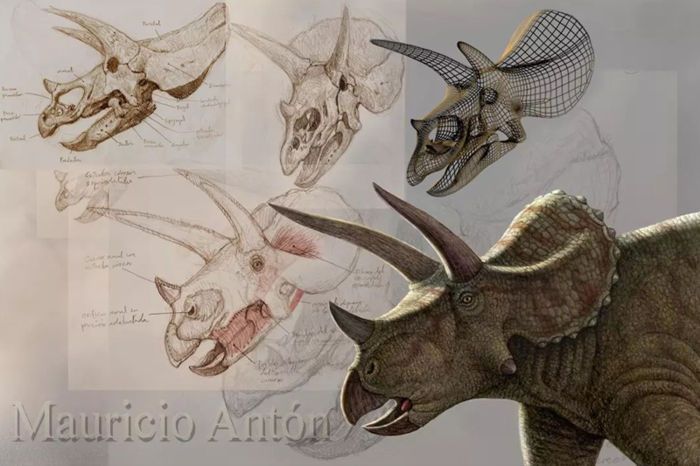
For example, the powerful legs of a Tyrannosaurus rex suggest a strong, muscular build, while the elongated neck of a Brachiosaurus indicates a different set of muscle and ligament structures.
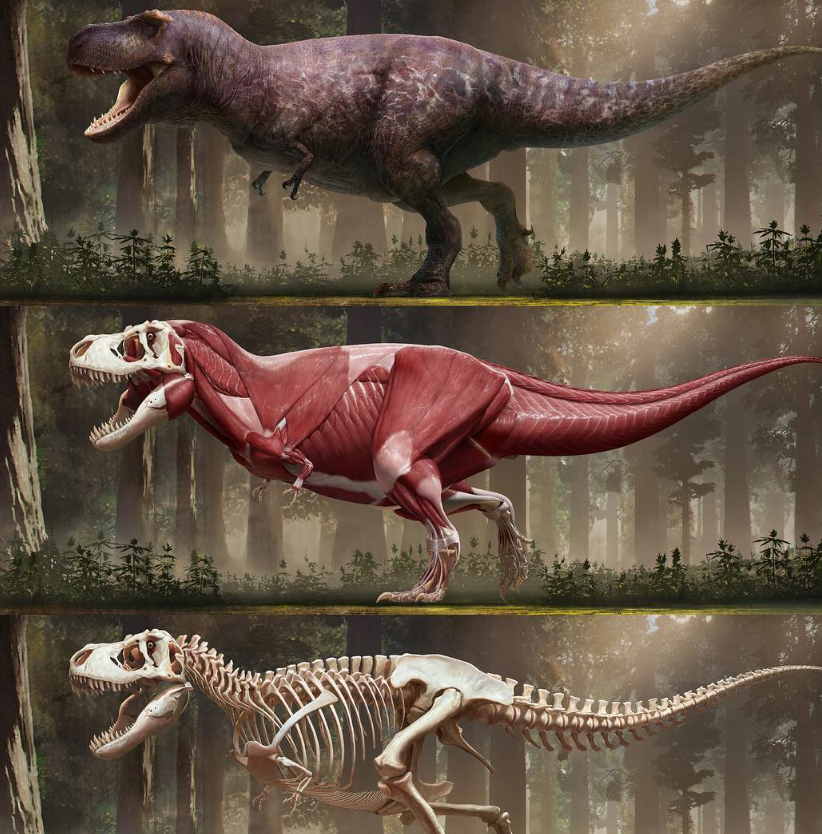
Artist: RJ Palmer
Furthermore, artists must consider the physiology of dinosaurs, such as their respiratory and circulatory systems. These internal structures can influence external features, such as the size of the chest cavity or the thickness of the skin.
By combining anatomical accuracy with physiological insights, paleo artists create lifelike and scientifically valid representations of dinosaurs.
- Movement and Behavior
Depicting the movement and behavior of dinosaurs adds another layer of complexity to paleo illustration. Fossil evidence provides clues about how dinosaurs moved, such as trackways that show footprints and stride length. By studying these clues, artists can infer whether a dinosaur was a fast runner, a slow walker, or something in between.
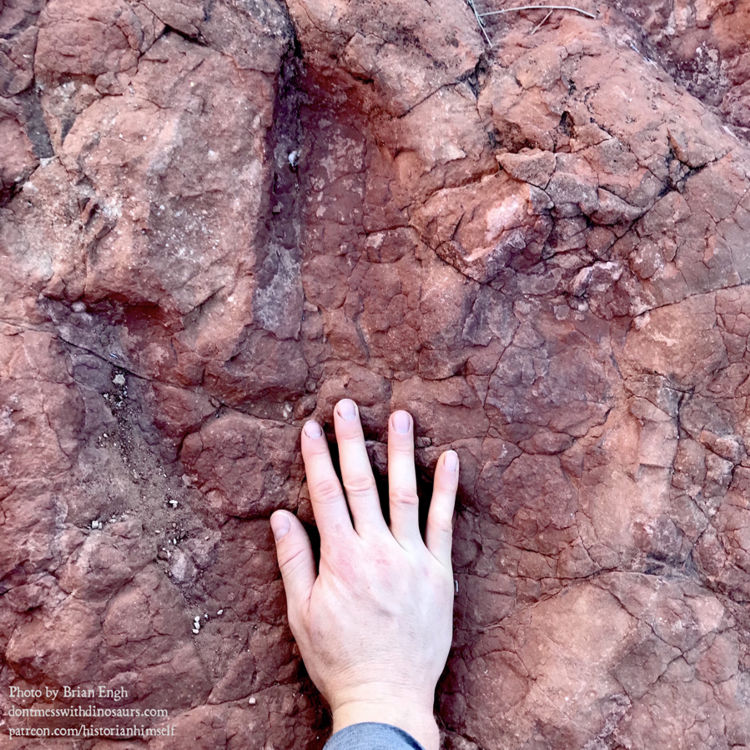
Paleo Artist Brian Engh at Saint George Dinosaur Discovery Site
Behavioral reconstructions are informed by both fossil evidence and modern analogues. For instance, the social behavior of modern birds and reptiles can provide insights into the behavior of their ancient relatives. Artists might depict herding behavior in hadrosaurs or the hunting strategies of theropods based on observations of living animals.
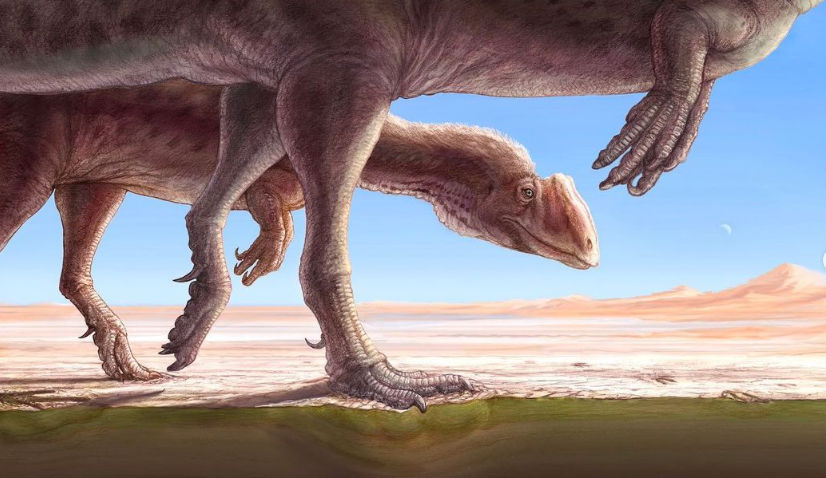
Paleo Artist Brian Engh
An excellent example is this illustration of the paleo artist Brian Engh. This scene is inspired by a block of dinosaur footprints that tumbled from a cliff at Lake Powell, as detailed in a recent paper by the Saint George Dinosaur Discovery Site.
Similarly, nesting behaviors and parental care, inferred from fossilized nests and juvenile remains, are often illustrated by drawing parallels with modern birds and reptiles.
Reconstructing Ecosystems
Reconstructing the ecosystems of different eras is a crucial aspect of paleo art. This involves depicting the plants and other animals that shared their environment.
Fossil evidence of flora, such as petrified wood, leaf imprints, and pollen, helps artists recreate the ancient landscapes. These reconstructions provide context and make the scenes more believable and immersive.
Artists must research the types of plants that existed during specific geological periods and regions. Including accurate representations of flora helps to create a realistic backdrop for the animals and enhances the educational value of the artwork.
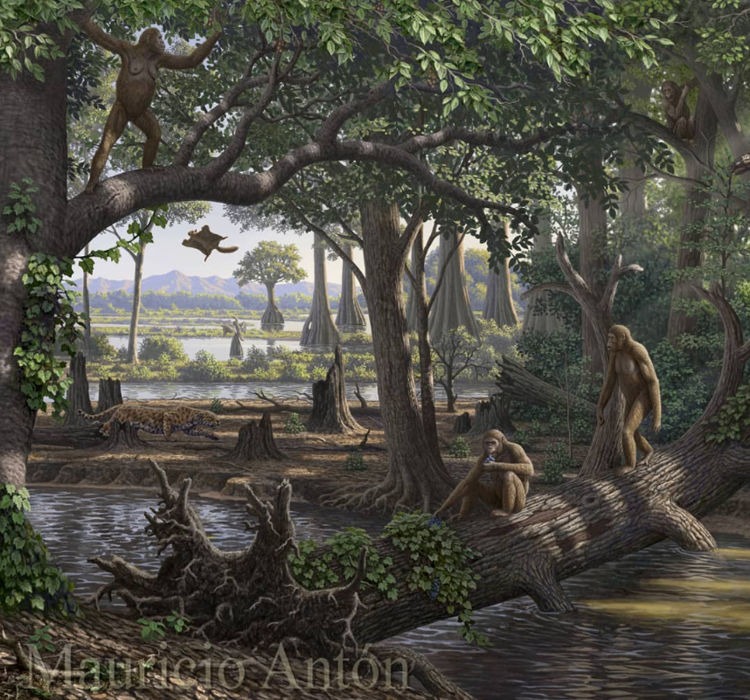
Paleo Artist Mauricio Antón. Large painting of the late Miocene environment in Bavaria, with the early hominid Danuvius and several other creatures. Made for the exhibition Molassic Park, Biotopia Museum, Munich.
Similarly, depicting other fauna is essential for reconstructing ecosystems. This includes other dinosaur species, early mammals, reptiles, amphibians, and even insects. These interactions help to tell a more complete story of the prehistoric world, showing how different species coexisted and interacted within their environments.
Color and Texture
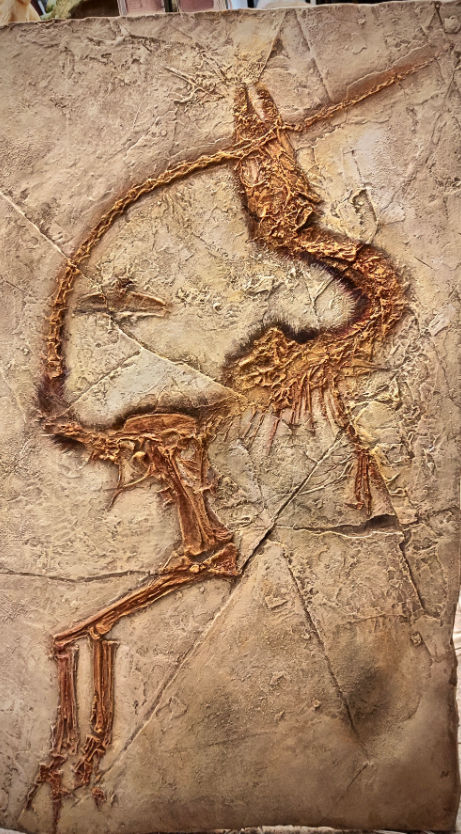
Sinosauropteryx fossil. Borrowed from Luis Rey blog.
Color and texture are among the most speculative aspects of paleo art, as direct evidence is often scarce. Fossils rarely preserve skin or feathers with their original colors, leaving artists to make educated guesses.
However, recent discoveries, such as pigment cells in some dinosaur feathers, have provided tantalizing glimpses into the possible coloration of these creatures.
Artists use these findings to create hypothetical reconstructions that balance scientific evidence with creative interpretation.
Textural details, such as scales, feathers, or skin folds, are equally important. Artists study modern reptiles and birds to understand how these textures might have appeared on dinosaurs.
For example, the scales of a crocodile or the feathers of a cassowary can provide valuable insights into the appearance of their ancient relatives.
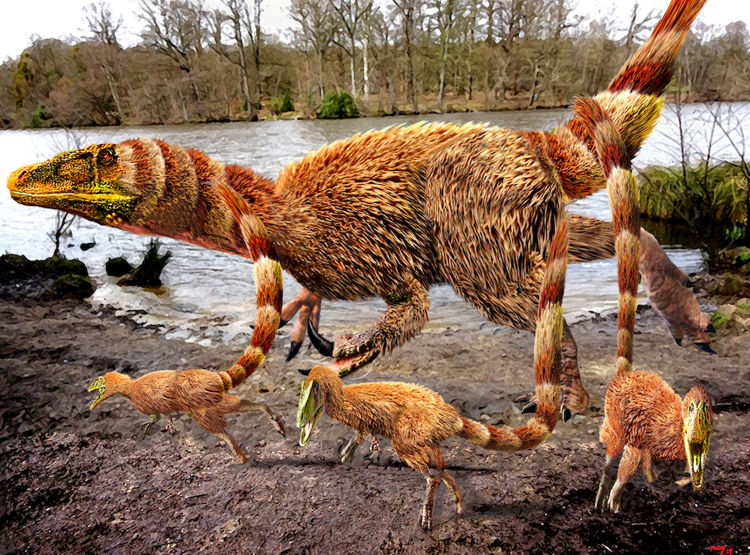
Sinosauropteryx from Paleo Artist Luis Rey.
For instance, the iridescent feathers of some theropods, inferred from microscopic structures similar to those in modern birds, suggest that some dinosaurs might have had vibrant, colorful plumage.
In summary, the elements of paleo illustration involve a careful balance of scientific accuracy and creative interpretation.
From the detailed depiction of dinosaur anatomy and behavior to the reconstruction of entire ecosystems and the speculative application of color and texture, paleo artists use a variety of techniques to bring the ancient past to life.
Through their work, they provide valuable insights into prehistoric worlds, educating and inspiring audiences around the globe.
CHAPTER 5
Famous Paleo Artists and Their Contributions
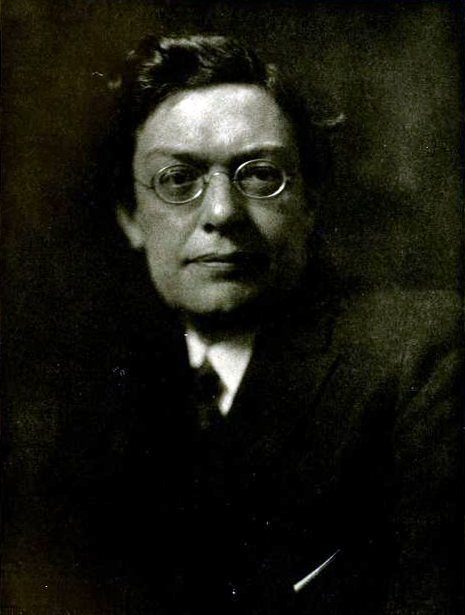
Charles R. Knight
Charles R. Knight (1874-1953) is widely regarded as one of the founding figures of paleo art. His work laid the groundwork for future generations of paleo artists, setting high standards for both scientific accuracy and artistic quality.
Knight’s meticulous attention to detail and his ability to bring prehistoric creatures to life in a dynamic and engaging manner made his work iconic.
Knight's most famous works include his murals and paintings for the American Museum of Natural History in New York and the Field Museum of Natural History in Chicago.
His depictions of dinosaurs, such as the fighting Laelaps (now known as Dryptosaurus) and the majestic Tyrannosaurus rex, are still celebrated for their lifelike realism and dramatic composition.
His collaboration with paleontologists like Henry Fairfield Osborn ensured that his illustrations were grounded in the latest scientific research.
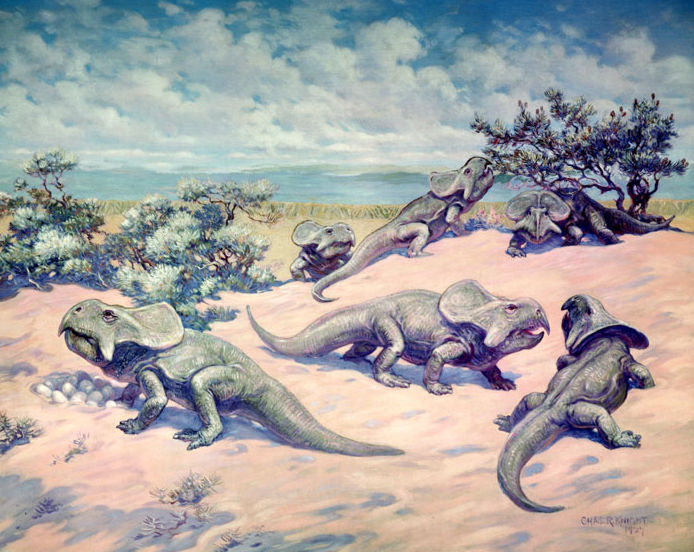
Protoceratops from Charles Knight
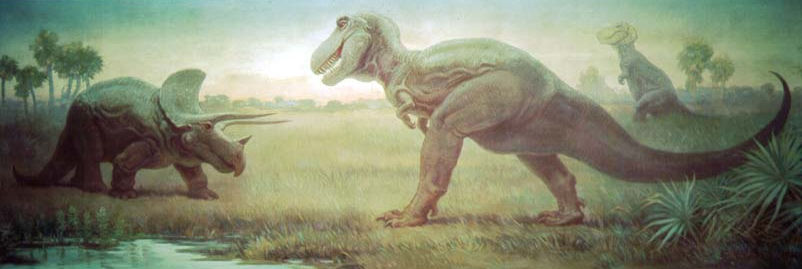
Charles Robert Knight
Knight's influence extends beyond museums. His work has appeared in countless books, magazines, and even inspired film depictions of dinosaurs. His ability to capture the imagination of the public helped to popularize paleontology and bring the wonders of prehistoric life into the mainstream.
Zdeněk Burian
Zdeněk Burian (1905-1981) was a Czech artist whose work has had a profound impact on the field of paleo art. Burian's illustrations are known for their meticulous detail and atmospheric quality, combining scientific accuracy with a painterly style that brings prehistoric worlds to life.
Burian collaborated extensively with paleontologist Josef Augusta, producing a vast body of work that covers a wide range of prehistoric life, from dinosaurs to early humans. His paintings often depicted entire ecosystems, showing animals in their natural habitats and interacting with each other and their environments.
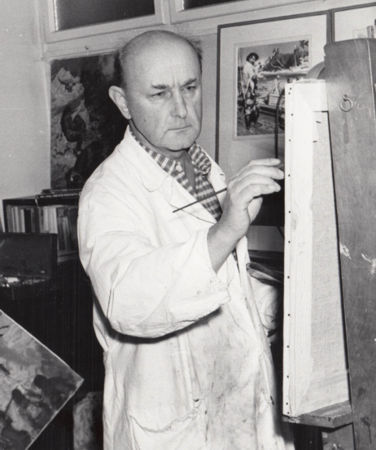
This holistic approach provided a comprehensive view of prehistoric life, emphasizing the interconnectedness of different species and their surroundings.
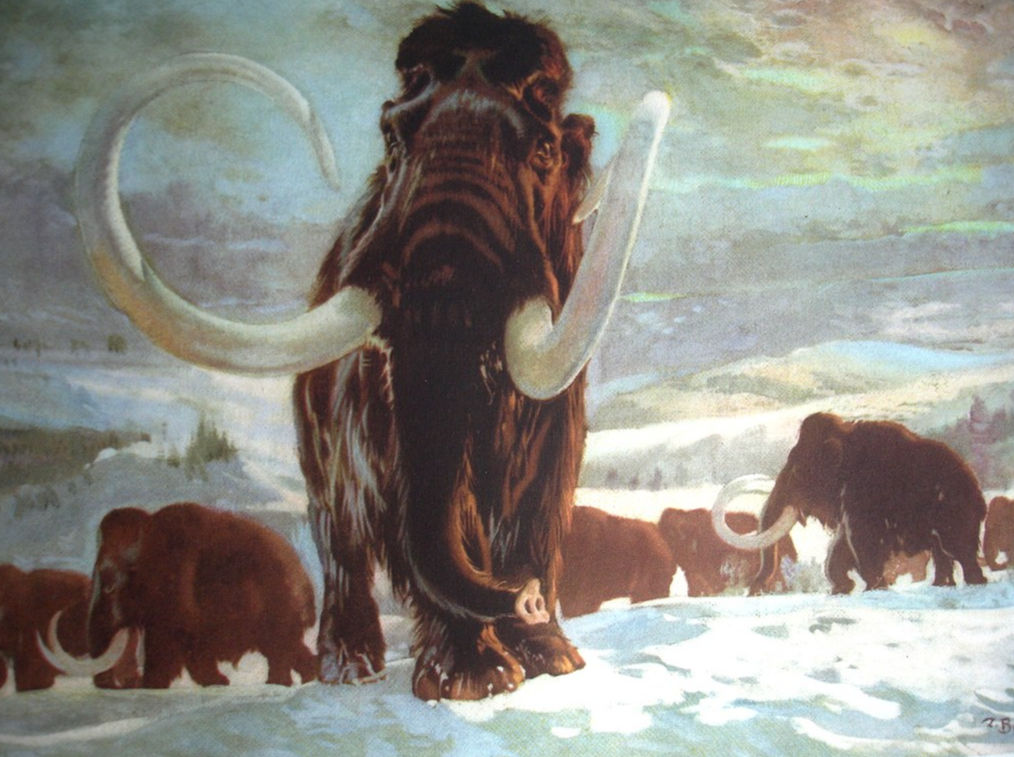
Mammoth - Zdenek Burian Prehistoric Animals
One of Burian's notable contributions is his work on the book "Prehistoric Animals," which has been translated into numerous languages and remains a staple in paleontological literature. His illustrations have educated and inspired generations of readers, making complex scientific concepts accessible and engaging.
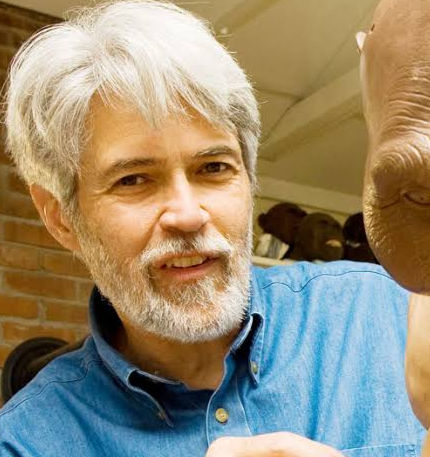
John Gurche
John Gurche is a contemporary paleo artist renowned for his reconstructions of early hominins and other prehistoric mammals. His work combines rigorous scientific research with exceptional artistic skill, resulting in lifelike and scientifically accurate depictions of our ancient ancestors.
Gurche’s reconstructions of hominins, such as Australopithecus afarensis (popularly known as "Lucy") and Homo erectus, are featured in prominent museums like the Smithsonian Institution's National Museum of Natural History.
His attention to anatomical detail and his ability to convey emotion and personality in his subjects set his work apart.
One of Gurche’s significant contributions is his book "Shaping Humanity," which details his process of reconstructing early humans.
The book provides insights into the scientific and artistic challenges involved in bringing our ancient relatives to life and underscores the importance of paleo art in understanding human evolution.
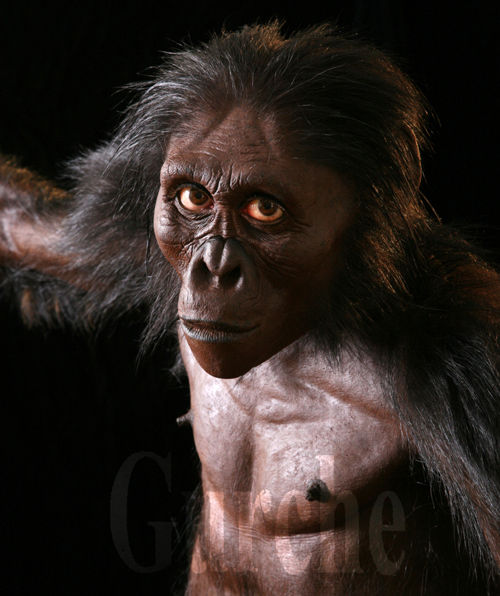
Full body reconstruction of Lucy, Australopithecus afarensis.
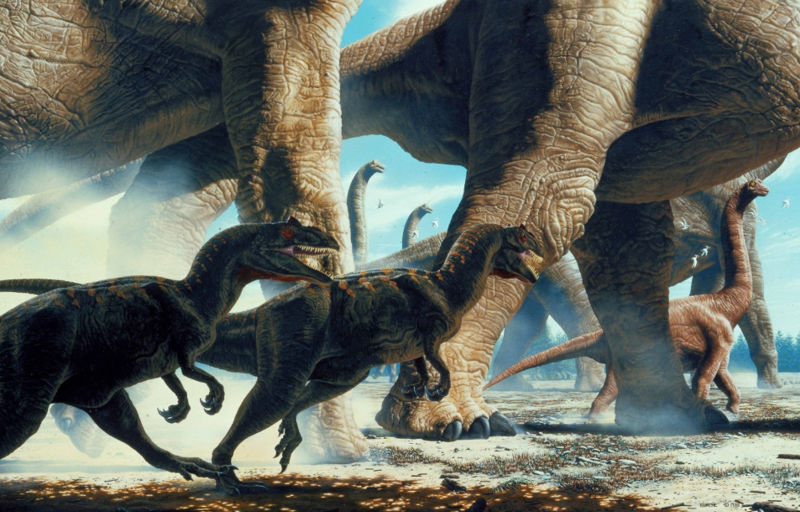
John Gurche Ultrasaurus and Allosaurus commissioned by National Geographic Magazine.
Mark Witton
Mark Witton is a British paleo artist and paleontologist known for his innovative and scientifically rigorous depictions of prehistoric life, particularly pterosaurs and other Mesozoic creatures.
Witton’s work is characterized by its detailed anatomical accuracy and vibrant, dynamic compositions.
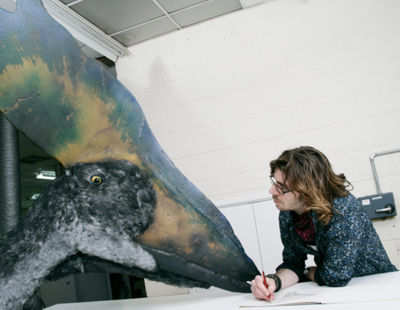
Witton has authored several books, including "Pterosaurs: Natural History, Evolution, Anatomy," which provides a comprehensive overview of these fascinating flying reptiles. His illustrations in the book are not only scientifically informative but also visually stunning, showcasing his talent for combining art and science.
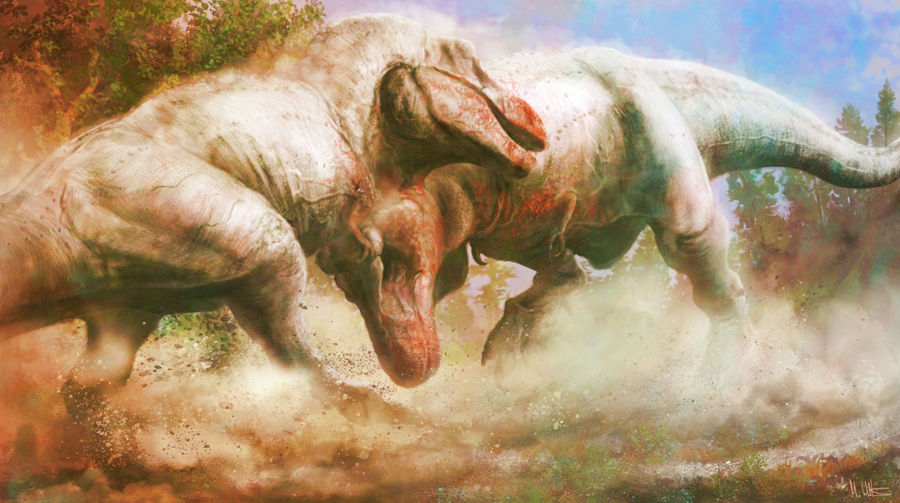
Tyrannosaurus rex head-butts (2021) Mark Witton.
In addition to his work on pterosaurs, Witton has contributed to various scientific papers and popular articles, using his illustrations to enhance the understanding of paleontological research.
His blog and social media presence have made him a prominent figure in the paleo art community, where he shares his insights and promotes the importance of accuracy and creativity in paleo illustration.
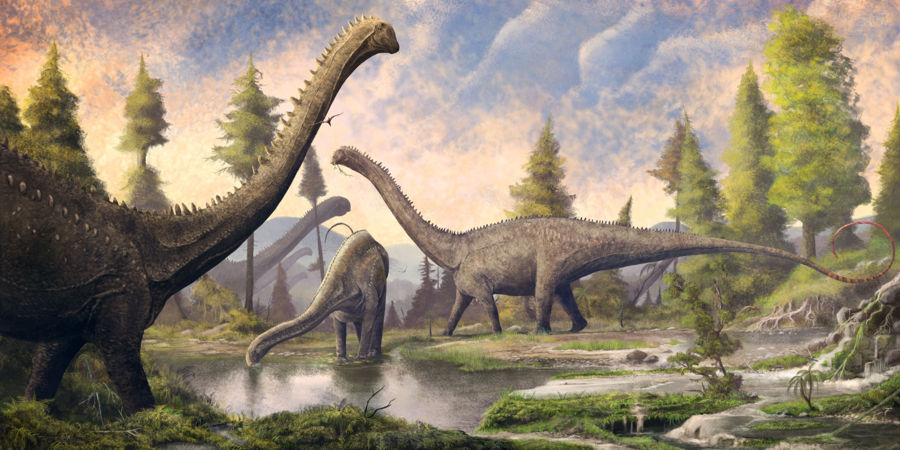
Mark Witton - A mural of Diplodocus produced for the Dorset County Museum
Mark Witton’s contributions to paleo art extend beyond his individual works. His advocacy for open communication between artists and scientists and his efforts to educate the public about paleontology have helped to elevate the field and inspire new generations of paleo artists.
In summary, these famous paleo artists have made significant contributions to the field, each bringing their unique perspective and skills to the task of reconstructing prehistoric life. Through their work, they have not only advanced the science of paleo illustration but also captured the imagination of the public, making the distant past more accessible and fascinating for everyone.
SUMMARY
The Ever-Evolving Art of Paleo Illustration
Reflecting on the Journey
The art of paleo illustration has come a long way since its inception. From the pioneering works of Charles R. Knight, who first brought dinosaurs and other prehistoric creatures to life in the public imagination, to the contemporary artists who continue to push the boundaries of scientific accuracy and artistic expression, paleo art has continually evolved.
Each generation of artists has built upon the foundations laid by their predecessors, incorporating new scientific discoveries and technological advancements to create ever more detailed and accurate depictions of ancient life.
Reflecting on this journey, it is clear that paleo art has played a crucial role in bridging the gap between science and the public. Through museum exhibits, books, media, and popular culture, paleo artists have made complex scientific concepts accessible and engaging, inspiring countless individuals to take an interest in paleontology and the history of life on Earth.
The collaborative efforts between artists and scientists have ensured that these depictions are not only visually stunning but also grounded in the latest scientific research.
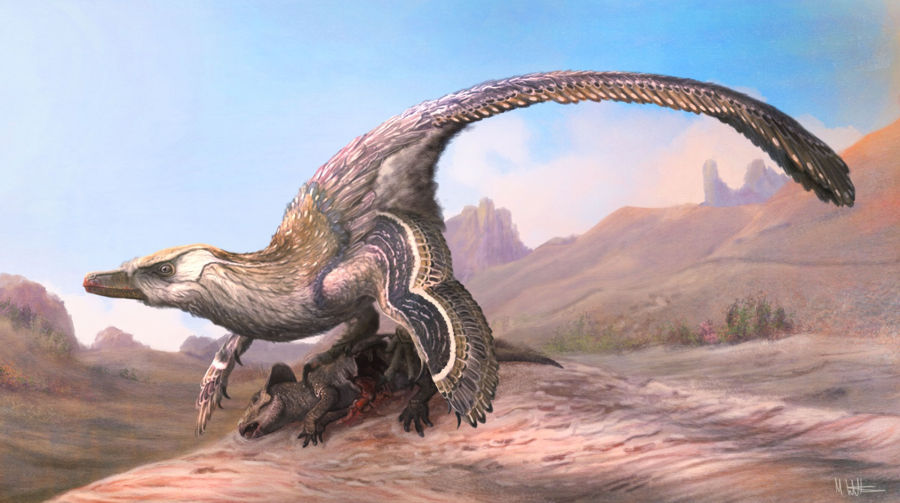
Mark Witton - Velociraptor mantles a freshly killed Protoceratops, scanning for other carnivores out to steal the carcass.
More
articles
Thank you for reading! If you enjoyed this article, please save our site in your bookmarks and share it with others who might find it interesting. Check out our blog for more articles just like this one.
Copyright ©2024 The Scientific Illustrator | All Rights Reserved
Privacy Policy | Terms & Disclaimers | DMCA